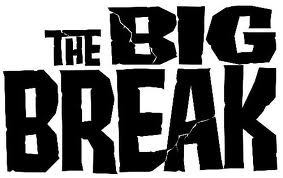BRAND DEVELOPMENT: How to Catch Your Break, Says Seinfeld

Branding development is an essential part of any business, large or small. It’s a key factor in creating a positive and lasting impression that will help your business stand out from the competition. But what exactly is brand development and how do you go about it?
Brand development is the process of creating and maintaining a unique identity for your business. It’s important to build an identity that’s recognizable and memorable, while still remaining authentic to your company’s mission and values.
To get started on your own brand development process, begin by determining your target audience. Who are you trying to reach? What are their wants, needs, and interests? Once you have a better understanding of your target market, you can begin to craft a brand message that resonates with them. Let’s follow Seinfeld’s path in his brand development.
“In solving a problem of this sort, the grand thing is to be able to reason backward. That is a very useful accomplishment and a very easy one, but people do not practice it much.” Sherlock Holmes
To acquire knowledge one must study. To acquire wisdom one must observe. Marilyn Vos Savant
If you are already someone who clearly knows your talents and your niche, but you are struggling to make it pay, read on. Many times, it’s simply a matter of marketing “fit” that is needed. Visibility, credibility, and messaging “fit” are learned skills. Seinfeld has a few answers for you. The show went from obscurity to number one. Here is a roadmap.
Seinfeld Became a TV Legend
Seinfeld was the first TV series to reach the mark of charging one million per advertising minute. It won 10 Primetime Emmy’s and the last episode had 76 million people watching.
Seinfeld wasn’t always must-see TV
People think that Seinfeld was an automatic hit. It wasn’t. Seinfeld had this to say: “The first few years were a bomb. We couldn’t beat Jack and the Fatman.” During this time, one of the writers said, “I hope I’m in show business this time next year.” After a couple of years, the cast was perplexed about their lack of success. “We are having so much fun being together. Isn’t it weird this show is still a bomb?” they would ask each other. “It really seems good. I can’t believe nobody likes it.” All the cast thought the show was hilarious.
What changed to make it a success?
According to Seinfeld, “Then somehow we got into a better time slot and people started liking the show, but it wasn’t until Season 4 that we got good ratings.” But since the show had been shuffled into eight different time slots before that one,, there was lots more to the story. Let’s take a more in-depth look at the process of getting your talents discovered, creating marketing “fit,” and developing a brand.
 1. Refining the Product Fit: The Invisible Years Led to Refinement
1. Refining the Product Fit: The Invisible Years Led to Refinement
During this “we-are-a-bomb stage,” the cast gelled as a team, the scriptwriters honed their message and characters and the show was finding its audience. The sedate first session was conversational, with Jerry performing some of his comedy bits from prior stage performances. Later, the monologues were dropped and the scene pace increased in both number and speed. Many of the changes were subtle and nuanced because the basic “product” was already good.
And an incredible amount of effort was put into making it good. “We killed ourselves to make those shows as good as they were. We weren’t just hanging around.” But still, it wasn’t successful. The breakthrough was created by refining the messaging and audience identification. Let’s look at the messaging first.
Three types of messaging were clarified: external, internal, and signature. External messaging is the short summary you give to the world. A tagline. The elevator pitch. The internal messaging is often more nuanced and lends direction and definition to the internal stakeholders. And finally, a signature message is something that creates an instant identity that furthers the brand.
2. Refining the Message Fit: Message Clarity Gives Direction & Definition
In the beginning, the show was called, “Stand-Up,” which speaks to how it saw itself: just a funny show. The ideas for each show were a combination of ideas that were loosely based on everyone’s personal experiences and simply pulled out of the “clear, blue sky.” For instance, there was a series on Seinfeld where George works in a real estate office and then he quits, and then tries to go back the next day, but they won’t take him back. That was based on a real episode in Larry David’s life when he was working at Saturday Night Live as a writer. But what was the show about really? Just being funny?
External Messaging or Branding with Taglines
Who would think that the message, “It’s about nothing” would resonate as a branding message for anything? Yet, counter-intuitively, it worked. For the writers and the cast, they stumbled on the line. According to the staff, “The crux of our messaging came from a line in the show–that the show was about “nothing.” “But obviously,” they go on to say, “everything has to be about something. It can’t be about nothing, so it was about everything.”
Refining the Message Fit: Internal Messaging
The internal message was also discovered “in process.” Seinfeld explains the internal messaging astutely, “Somewhere we hit on the idea to make the show about all the little things in life and turn them into huge disasters. And that’s what the show was about–that the small struggles of life are the big struggles.” Interestingly, it was discovering this internal messaging compass that also helped clarify the audience, as we will see later. And finally, the third form of messaging is signature moments.
Discovering “Signature” Moments Creates Messaging “Fit”
All the cast and crew agree that many of the most memorable, “signature” moments were spontaneous. And wise nichers know to capture those moments and use them.
 Yada Yada Yada
Yada Yada Yada
The writers had two phrases in one episode: Yada Yada Yada and Anti-Dentite. Peter Mehlman threw Yada Yada Yada in there because he remembered the phrase from an editor he had had lunch with 15 years earlier. It was her catchphrase—a bunch of nonsensical words—that she used when she wanted to gloss over important details. Peter Mehlman expected Anti-Dentite to resonant with fans and thought Yada Yada Yada would never catch on.
I have found in my own speaking, writing, and entrepreneurial endeavors, that same lack of predictive ability. When I am practicing a speech, the things I think will be a hit, often get no reaction, and the things I offhandedly say during Q&A, are key moments. Many communicators have voiced the same sentiment–no matter how long they have been in business. There is only so much predictive ability experience gives you. Sometimes only experimentation, being astute enough to recognize a moment and then savvy enough to capture it delivers a “signature” messaging fit.
In its pre-legend stage, the Seinfeld show refined its messaging and then it refined its audience identification.
 3. Refining Audience Fit: Seinfeld found its Audience
3. Refining Audience Fit: Seinfeld found its Audience
This is one of my favorite phrases they had when discussing the progression of the show: “Seinfeld took years to discover its audience.” (Note: not the other way around.) Do you struggle with identifying your ideal audience? So did Seinfeld. But they kept putting the show out there, analyzing who responded, and giving that audience more of what they wanted. The audience did not discover Seinfeld. Seinfeld discovered them. Discovery implies a process.
Listening to Your Audience Created Audience Fit
Once the writers and characters defined the show as being about the small struggles of life being the big struggles, it then helped everyone understand the audience of the show. Up until that time, the show was seen as a cult hit. “It had been viewed as an upscale, urban TV series hip enough to play to Los Angeles and New York but supposedly a puzzle to the rest of the country.”
Seinfeld knew differently. For most nichers, understanding that “everyone” is not your audience is a huge breakthrough. Normally, narrowing rather than broadening is a good strategy. Ironically, in this particular case, the positioning strategy that worked was NOT to narrow the audience. Seinfeld learned this from listening to his audience.
Seinfeld said, “I always knew we weren’t a narrow demographic hit because of comments I received from the garbage man on the street or the security guy by the X-ray machine at the airport. It’s just nice to have that stigma of being a cult hit removed.
 Position Yourself for the Tipping Point
Position Yourself for the Tipping Point
As these refinements happened, the show was moved to a new time slot—one that finally worked. As mentioned earlier, there had been eight prior time slot changes, but finally, this one worked. And this time, everyone was ready to ride the breakthrough.
Now the time slot change was really just a tipping point—the big break that monetizes your niche dramatically. Malcolm Gladwell defines a tipping point as “the moment of critical mass, the threshold, the boiling point”. And I would add, the breakthrough. The dictionary defines the physics term of “critical mass” as the place where you can “sustain a chain reaction at a constant rate.”
It’s always a mistake, however, to seek the “lucky break” because you will start to work differently. It’s critical to understand that a tipping point is built by many daily efforts and lots of fine-tuning. Creating visibility, credibility, accurate communication, and audience fine-tuning is cumulative. It’s impossible to know as you build what one event creates that critical moment, so seeking it only disrupts your thinking and working habits. Instead, think in terms of diligence and creating cumulative power.
Many of Seinfeld’s “girlfriends” who appeared on the show went on to great careers. Many attribute it to that one moment on Seinfeld—which became their “break.”
One of Seinfeld’s girlfriends, Christine Taylor (of the Brady Bunch) compared working at the tipping point in contrast to working at the cumulative efforts that build it. She said, “It’s so unbelievable to me that you can literally work 5 days and appear for maybe 6-7 minutes total in that episode and more people will recognize me from that than any movie that you work your butt off on.” What she didn’t recognize is that in order to have the opportunity to be on Seinfeld for 6-7 minutes, she had to have “worked her butt off” in many of those prior projects. She, nor any of the other “girlfriends,” would have been “top of mind” to have been offered the “break” without those prior efforts.
Seinfeld said, “I guess you kind of plant a seed, and you water a plant, and you don’t notice anything. Then all of a sudden you turn around and go, ‘Look, it’s a big tree.’ You’re taken by surprise.”
So, on the way to your Emmy, New York Times Bestseller, and zillion-dollar business, be willing to start (small), hang in there (become familiar), be consistent (develop trust), and constantly refine. Refine and define your message fit and your audience fit. Then seize the opportunity when the break happens and revel in your “overnight” success!
Brand development is learning to make your niche, talent, and/or business known and profitable. Sometimes that involves learning to communicate better. Sometimes that involves refining your Audience Knowledge. For Seinfeld, there were needed refinements in the product, the message, and the audience discovery. The show, in a general sense, was working, but it was pre-legend stage.
Discovering your business “fit” and honing your brand development always increases income, often exponentially.
References:
Blatt, B. The Evolution of Seinfeld: For a show about nothing, the sitcom changed a lot over its nine-year run. Slate. Retrieved from For a Show About Nothing, Seinfeld Changed a Lot Over Its Nine-Year Run http://buff.ly/2dcPH6Y
Cerone, D. (1993, March 5). Time-slot change helps ‘Seinfeld’ gain in ratings. Los Angeles Times. Retrieved from http://buff.ly/2cQypvL
Gladwell, M. (2000). The tipping point: How little things can make a big difference: Little Brown.
Jerry Seinfeld. Pioneers of Television. Retrieved from http://www.pbs.org/wnet/pioneers-of-television/pioneering-people/jerry-seinfeld/

